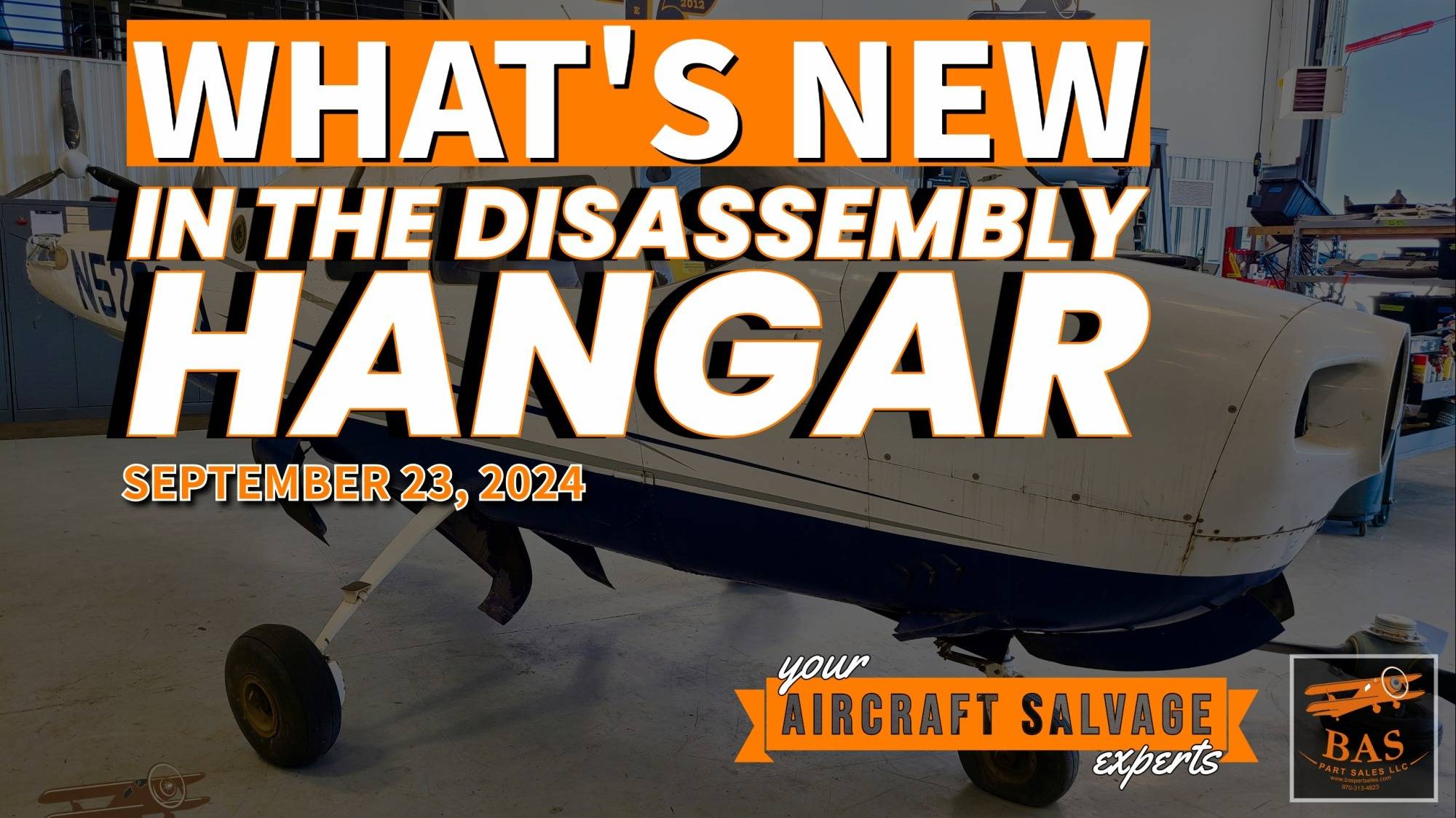5 Things I Never Knew About Aviation (Until I Joined the Industry)
Posted by Bailee Lynch on Apr 21st 2025

Hi, I'm Bailee! I manage social media marketing for BAS Part Sales. When I first joined the team in the last quarter of 2024, I knew absolutely nothing about aviation. Fast forward to today, and I spend most of my time in the hangar capturing content that showcases the fascinating world of aircraft and parts. It's been an exciting journey—one where I've learned a ton about aviation and discovered a whole new passion along the way.
Before I started working in the aircraft industry, I thought I had a pretty solid grasp on how planes worked: you board, you fly, you land—easy enough, right? Turns out, there’s a whole hidden world behind that curtain at the front of the cabin, and it’s way more interesting (and sometimes surprising) than I ever expected. Over the past six months, I’ve learned things that totally flipped my perspective on flying—some quirky, some technical, and some downright reassuring. So whether you’re a fellow aviation nerd, a curious traveler, or someone who’s just here for the fun facts, here are five things I never knew about airplanes until I started working with them every day. Buckle up!

5 Things I Never Knew About Airplanes (Until I Joined the Industry)
It’s a weird sentence to start with, but yes—plane crashes happen more often than the media lets on. The key thing is, most of them aren’t fatal. From gear-up landings to runway excursions and even mid-air engine failures, the vast majority of incidents end with everyone walking away. Commercial and private aircraft are built with multiple layers of redundancy, and pilots are trained for scenarios most of us would consider nightmares. Statistically speaking, flying is still one of the safest modes of transportation.
One of the most unexpected truths? Pilots aren’t flying the plane by staring out the windshield. Their seats are positioned for optimal visibility of the flight instruments and control panels—not the horizon. At cruising altitude, there’s often little to see anyway except clouds and sky. The real focus is on systems, navigation, and communication, not sightseeing. Next time you're looking at a cockpit and thinking it's like driving a car—think again.
Let’s talk about the unsung hero of aircraft systems: the Ram Air Turbine (or RAT). In the unlikely event of a full engine failure, some aircraft can deploy this small wind-powered turbine to generate emergency electrical and hydraulic power. It’s like a mini windmill that drops from the belly of the plane to keep critical systems alive long enough for the pilots to land safely. It’s not glamorous, but it’s a lifesaver—literally.
Flying high has its perks, but it also means dancing with freezing altitudes. For aircraft that are pressurized and capable of higher cruising levels, icing on the wings can be dangerous. That’s where wing boots come in. These rubberized linings inflate like tiny balloons, expanding just enough to crack the ice off the leading edges. It’s a simple but genius bit of engineering, keeping the plane's lift surfaces clean and the flight safe.
Here’s something Hollywood rarely shows correctly: engine failure doesn’t mean instant doom. Even large commercial jets can glide surprisingly far if they lose power. The average glide ratio is about 15:1, meaning a plane cruising at 30,000 feet can still glide around 80 miles. That’s a lot of potential landing spots. With proper pilot training and some luck with terrain, a safe landing is entirely possible—just ask Captain Sullenberger of the “Miracle on the Hudson.”
Conclusion: From the Ground Up, a Whole New Perspective
Before stepping into the aircraft industry, I saw planes the way most people do—from the aisle seat, 36,000 feet up, with a pretzel bag in one hand and blind trust in the cockpit. But now, with six months of hands-on experience under my belt, I’ve come to see aircraft not as mystical machines, but as finely tuned marvels of engineering—designed with layers of safety, logic, and innovation that you’d never notice unless you’re under the cowling or inside the cockpit.
What’s fascinated me the most is how much thought has gone into “what if” scenarios. From Ram Air Turbines kicking in during a power loss, to wings that can literally shake off ice, to glide paths that can take a powerless plane miles toward a safer landing—it’s all been designed with resilience in mind. Even the crash statistics, when put into context, reveal a picture that’s far less scary and far more reassuring than the sensational headlines suggest.
Every day I learn something new, and with each part we inspect, clean, or sell, I gain a little more respect for the thousands of people—from engineers to mechanics to pilots—who make aviation as safe and dependable as it is today. Whether you're an aviation geek, a nervous flyer, or just someone who’s curious, I hope this peek behind the hangar doors has given you a fresh perspective. Planes are way cooler (and smarter) than I ever imagined—and now, I can't stop looking up.




